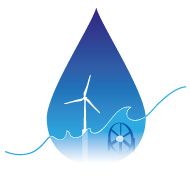Micro-wind, the Water-Energy Nexus, and High-efficiency Electric Motors

From there, it was another 40 miles or so south to a fantastic luncheon in which I was introduced to the executive director of the National Water Research Institute. The connection between water and energy, the so-called “water-energy nexus,” is an increasingly important facet of the drive towards sustainability, and it was great to get to know one of the real movers and shakers.
Then it was back north, barely beating the late afternoon traffic, enabling me to hit an IEEE cleantech conference on the way home, where my friend Ron Pretlac, CEO of Green Tech Motors, was talking up his new Large Air Gap Electric Ring (LAGER), a new take on high-efficiency electric motors.
After a day like that, it was indeed time for a lager – a cool one.

For many years, large (multi-horsepower) motors have had efficiencies exceeding 90%. However, many motors of less than 1/2 HP have efficiencies that are much lower. In home HVAC systems, often brushless DC motors (really AC motors with a built-in inverter) are used which are more efficient than the previously used PSC motors.
I try to keep my knowledge of motors up to date and would like to learn more about LAGER motors. It would be interesting to know how their efficient compares with VSR (variable switched reluctance) motors which are also very efficient.
The company has not yet made its products and their complete specs public. I’ll keep you posted.
There is simply no need for “V2G” for the EV at the Residence. (Perhaps, the main voice encouraging “V2G”, Professor Kempton at U. of Delaware is trying to be “Published” but she is not comprehending or simply ignoring the EV actual charging demand.) As long as the Electric Utility is able to support the average home electric clothes dryer then they can support home EV charging as the power levels are less for the EV charging (as much as 1/2 the consumption of a Dryer in fact.) Now, the presence of EV, seem to be a big thing only because the Electric Utilities are looking to blame “someone else” for their need to upgrade the Grid, and maintain the dividends to their stockholders.
Charging at 120 Volts @ 13 Amps (Level one) is very suitable for less than eight hours of recharging time nightly, and is roughly to the demand of an electric washing machine. Or half what a Dryer uses when it is on, and charging at 220 volts @ 30 amps (Level two) is also less than the consumption of a electric clothes dryer. And it only takes a typical three hours daily. Now we are hearing that the Electric utilities have failed to provide adequate service capability to our homes and the 220 Volts @ 150 to 200 amps Service mandated by the building codes.
It is time to cut back on dividends and upgrade the Physical Plant or Distribution (wires and transformers) as should have been done before this but, it has not.
Perhaps, raising the price of power to industries that now pay much lower rates than homes, is a first step and will encourage “Co-Generation” alternatives for factories to reduce their demand and expense. Those huge warehouse roofs look like great locations for solar collectors using grid tie-in to reduce the Peak Demand during daytime hours when Air Conditioning is working at the max!